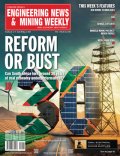|
SELECT a_id, a_id_word, a_headline, a_publish_date, a_abstract, a_author, a_has_video, a_has_audio FROM su_cat_sg_mappings, re_categories , re_category_sections_assoc , pr_sections , pr_article_section_assoc , pr_articles_search, pr_article_media_assoc WHERE csg_sg_id = 1 AND csg_cat_id = cat_id AND a_status = 1
AND a_process_status = 4 AND a_expiry_date >= 1714334400
AND cat_id = scat_cat_id AND scat_s_id = s_id AND s_id = ase_s_id AND ase_a_id = a_id
AND cat_re_id = 42 AND ama_a_id = a_id AND ama_mt_id = 2 AND ama_p_id = ase_p_id AND s_id NOT IN (14903,14910,14911,14906,14904,14912,14909,14908,14907,14905) AND a_publish_date <= 1714334400 AND ase_s_id IN (14576,15076,14885,15075,14270,14271,14272,14886,14274,14273,14888,15674,14887,14889,14891,14892,14893,14894,14895,15673,14896,14897,14898,14899,14900) GROUP BY a_id ORDER BY a_publish_date DESC LIMIT 0, 100
|
 |
Energy Transition Report: South Africa Progressing its Just Energy Transition
 Published: 24 Jan 23
International Energy Agency executive director Dr Fatih Birol has said that the world is facing its “first truly global energy crisis”. However, he argues that faster clean energy transitions could help to moderate the impact of the crisis.
South Africa has committed to reducing its greenhouse-gas emissions by 2030 and to achieve net-zero carbon emissions by 2050, subject to appropriate financial support, and premised on enabling a just transition for affected communities and regions.
Government’s Just Energy Transition (JET) Investment Plan outlines investments valued at a combined R1.50-trillion that should be made in the electricity, electric vehicle and green hydrogen sectors over the five years from 2023 to 2027 to enable South Africa to meet its climate commitments, stabilise energy supply and cushion vulnerable workers and communities.
Creamer Media’s “Energy Transition Report 2023” examines South Africa's JET plans by delving into the state of its electricity sector and its current 6 000 MW electricity shortfall; its State-owned power utility Eskom and the challenges it is facing in alleviating that shortfall, and independent power producers that are in the best position to help bridge that shortfall. It also examines South Africa’s potential to produce green hydrogen, and the role that the automotive and mining sectors have to play in fulfilling the country's JET, as well as the capacity that the just transition has to create much-needed employment.
|
|
 |
Iron-Ore 2022: Mixed fortunes
 Published: 06 Dec 22
The re-emergence of Covid-19 curbs in China and a deepening crisis in its real estate sector have been among the factors hindering iron-ore demand growth in 2022.
However, Australian iron-ore producer Fortescue Metals contends that global market conditions remain supportive of iron-ore, as Chinese industrial activity is expected to increase in the coming months. Fortescue Metals also believes that such strong demand for iron-ore will benefit producers amid global supply constraints, owing to the prevailing conflict in Ukraine.
Creamer Media’s ‘Iron-Ore 2022: Mixed fortunes’ report considers the impact of conditions in China and the conflict in Ukraine on the global iron-ore sector, providing an overview of the sector, including efforts to decarbonise. This includes the major global and South African iron-ore producers’ response in the current environment.
|
Iron-Ore 2022: Mixed fortunes
|
 |
Africa Mining Projects in Progress 2022
 Published: 25 Nov 22
South African Mineral Resources and Energy Minister Gwede Mantashe has proclaimed mining is still a sunrise industry on the African continent and has urged investors to come to Africa, because “That’s where the future is!”
However, many investors are finding it difficult to heed the Minister’s call largely owing to the countless, sometimes insurmountable, barriers that prevent many of them from even getting past the initial stages of exploration. As a result, the extent of Africa’s purported mineral wealth remains unknown.
|
|
 |
Projects in Progress 2022 (Second Edition)
Published: 13 Oct 22
Without basic infrastructure to deliver energy and water, and to facilitate mobility and communication, South Africa’s growth prospects will remain constrained.
Greenfield and brownfield investment will also not materialise at the pace and scale needed to stimulate the mass employment required to begin addressing the country’s social scourges.
While the costs of these backlogs are mounting, some optimism can be drawn from the fact that, from energy and transport to digital communications, government and its State-owned enterprises are moving in a direction that will open some of these sectors to new investors.
If well managed, it is even possible that these partnerships could result in a private, fixed investment boom and that the infrastructure required to
stimulate future productive investment will begin to materialise.
|
|
 |
Decarbonisation 2022: Decarbonisation in South Africa
 Published: 20 Sep 22
The global metals and mining sector is a significant producer of carbon dioxide. Mining is currently responsible for an estimated 4% to 7% of greenhouse-gas (GHG) emissions worldwide, while the steel sector accounts for about 10% of combined global carbon dioxide (CO2) emissions.
With this in mind, efforts to decarbonise economies are being accelerated worldwide to reduce CO2 emissions by 2030.
South Africa’s Department of Forestry, Fisheries and the Environment, in partnership with national and provincial environmental partners, submitted an updated Nationally Determined Contributions (NDC) report at the twenty-sixth edition of the climate negotiations, held in Glasgow in November 2021.
This represents a 17% and 28% reduction in 2025 and 2030 respectively, on the initial upper-end target of the 614-million tonnes carbon dioxide equivalent set in the 2015 NDC.
Creamer Media’s ‘Decarbonisation 2022: Decarbonisation in South Africa’s mining and steel sectors’ report considers the challenges the country faces in achieving these goals and the steps that it is taking to realise the its decarbonisation ambitions.
|
|
 |
Roads, Rail & Ports 2022: Inefficiencies holding back economic growth
 Published: 12 Sep 22
After many years of allowing the infrastructure of the crucial network industries that underpin South Africa’s logistics sector to deteriorate, amid inadequate maintenance, indecision and corruption, government appears to have resolved itself to improving the performance of the sector.
It aims to do this by improving the efficiency of its underperforming ports by allocating more funds for port projects, ramping up road construction and maintenance, as well as permitting private-sector participation in the rail sector, where the challenge of restricted capacity has been exacerbated by the increasing incidence of asset theft and vandalism.
In light of these developments, Creamer Media has compiled the ‘Roads, Rail & Ports 2022: Inefficiencies holding back economic growth’ report in which these pertinent issues are discussed, including a review of the scale and state of South Africa’s roads, rail and ports infrastructure, the maintenance and funding thereof, and the initiatives that are under way to tackle the many inefficiencies in these sectors.
|
|
 |
Hydrogen 2022: Green hydrogen gaining momentum
 Published: 02 Sep 22
Creamer Media’s ‘Hydrogen 2022: Green hydrogen gaining momentum’ report delves into the global hydrogen sector, including demand and supply, investment, the technology behind the energy source, as well as the trade thereof. The report specifically highlights the significance and potential of South Africa as a green hydrogen producer, including the resources and technology it has to produce the fuel. It also discusses some of the projects that it is undertaking to achieve its ambitions of becoming a significant green hydrogen producer.
|
|
 |
Water 2022: A system under pressure
 Published: 18 Aug 22
Creamer Media’s ‘Water 2022: A system under pressure’ report provides a global overview of the challenges and opportunities facing water and sanitation systems worldwide. In particular, the report focuses on South Africa’s impending water crisis and the status quo around water regulations and policies, planning by government and its aim to eliminate any further portents of a “Day Zero”. The report also highlights some of the major water and sanitation projects under construction, as well as the funding thereof.
|
|
 |
Automotive 2022: The road to EVs
 Published: 29 Jul 22
Creamer Media’s 'Automotive 2022: The road to EVs' report examines South Africa’s automotive industry in this context, unpacking the country’s vehicle sales, manufacturing and investment by the country’s original-equipment manufacturers and components industry, as well as the regulatory environment. It also explores the shift from internal combustion engines to EVs, as it becomes increasingly necessary to decarbonise and mitigate against climate change.
|
|
 |
Gold – Midyear Brief 2022
 Published: 15 Jul 22
Creamer Media’s Real Economy Year Book has been divided into separate reports under the banner Real Economy Insight, and investigates key developments in the automotive, construction, electricity, petrochemicals, oil and gas, road, rail and ports, steel, water, manufacturing, pumps, coal, gold, iron-ore and platinum sectors. This five-page brief is a synopsis of key developments in the gold sector over the past 12 months. It provides an overview of gold’s performance in the year to date and whether gold will continue to weather the ups and downs of the market.
|
|
|
|
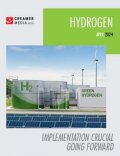 Buy Report
Hydrogen 2024: Implementation crucial going forward
Buy Report
Buy Report
Hydrogen 2024: Implementation crucial going forward
Buy Report
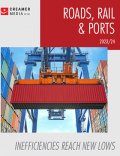 Buy Report
Roads, Rail & Ports 2024: Inefficiencies reach new lows
Buy Report
Buy Report
Roads, Rail & Ports 2024: Inefficiencies reach new lows
Buy Report
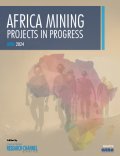 Buy Report
Africa Mining Projects in Progress 2024
Buy Report
Buy Report
Africa Mining Projects in Progress 2024
Buy Report
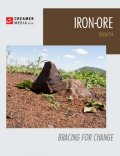 Buy Report
Iron-Ore 2023/24: Bracing for change
Buy Report
Buy Report
Iron-Ore 2023/24: Bracing for change
Buy Report
 Buy Report
Platinum Group Metals 2023: Crucial Element in the Energy Transition
Buy Report
Buy Report
Platinum Group Metals 2023: Crucial Element in the Energy Transition
Buy Report
 Buy Report
Automotive 2023: Navigating change
Buy Report
Buy Report
Automotive 2023: Navigating change
Buy Report
 Gonfreville-l’Orcher hydrogen production plant, France
Published: 26 Apr 24
Gonfreville-l’Orcher hydrogen production plant, France
Published: 26 Apr 24
 Khavda Renewable Energy Park, India
Published: 26 Apr 24
Khavda Renewable Energy Park, India
Published: 26 Apr 24
 Grand Ethiopian Renaissance Dam, Ethiopia – update
Published: 26 Apr 24
Grand Ethiopian Renaissance Dam, Ethiopia – update
Published: 26 Apr 24
 Copper hit $10 000 a ton for the first time in two years as speculation builds that the world’s mines will struggle to meet a coming wave of demand...
Transnet volumes, revenue up, but falls short of recovery targets
Published: 26 Apr 24
Copper hit $10 000 a ton for the first time in two years as speculation builds that the world’s mines will struggle to meet a coming wave of demand...
Transnet volumes, revenue up, but falls short of recovery targets
Published: 26 Apr 24
 State-owned Transnet has reported a 1.5% year-on-year improvement in the total rail volumes reaching 151.7-million tonnes at the end of March 2024,...
Eskom says generation recovery plan gathering momentum
Published: 26 Apr 24
State-owned Transnet has reported a 1.5% year-on-year improvement in the total rail volumes reaching 151.7-million tonnes at the end of March 2024,...
Eskom says generation recovery plan gathering momentum
Published: 26 Apr 24
 During a State of the System address hosted on Friday, Eskom confirmed its generation recovery plan (GRP) is making tangible progress, with various...
During a State of the System address hosted on Friday, Eskom confirmed its generation recovery plan (GRP) is making tangible progress, with various...
 Copper hit $10 000 a ton for the first time in two years as speculation builds that the world’s mines will struggle to meet a coming wave of demand...
Transnet volumes, revenue up, but falls short of recovery targets
Published: 26 Apr 24
Copper hit $10 000 a ton for the first time in two years as speculation builds that the world’s mines will struggle to meet a coming wave of demand...
Transnet volumes, revenue up, but falls short of recovery targets
Published: 26 Apr 24
 State-owned Transnet has reported a 1.5% year-on-year improvement in the total rail volumes reaching 151.7-million tonnes at the end of March 2024,...
Eskom says generation recovery plan gathering momentum
Published: 26 Apr 24
State-owned Transnet has reported a 1.5% year-on-year improvement in the total rail volumes reaching 151.7-million tonnes at the end of March 2024,...
Eskom says generation recovery plan gathering momentum
Published: 26 Apr 24
 During a State of the System address hosted on Friday, Eskom confirmed its generation recovery plan (GRP) is making tangible progress, with various...
During a State of the System address hosted on Friday, Eskom confirmed its generation recovery plan (GRP) is making tangible progress, with various...












